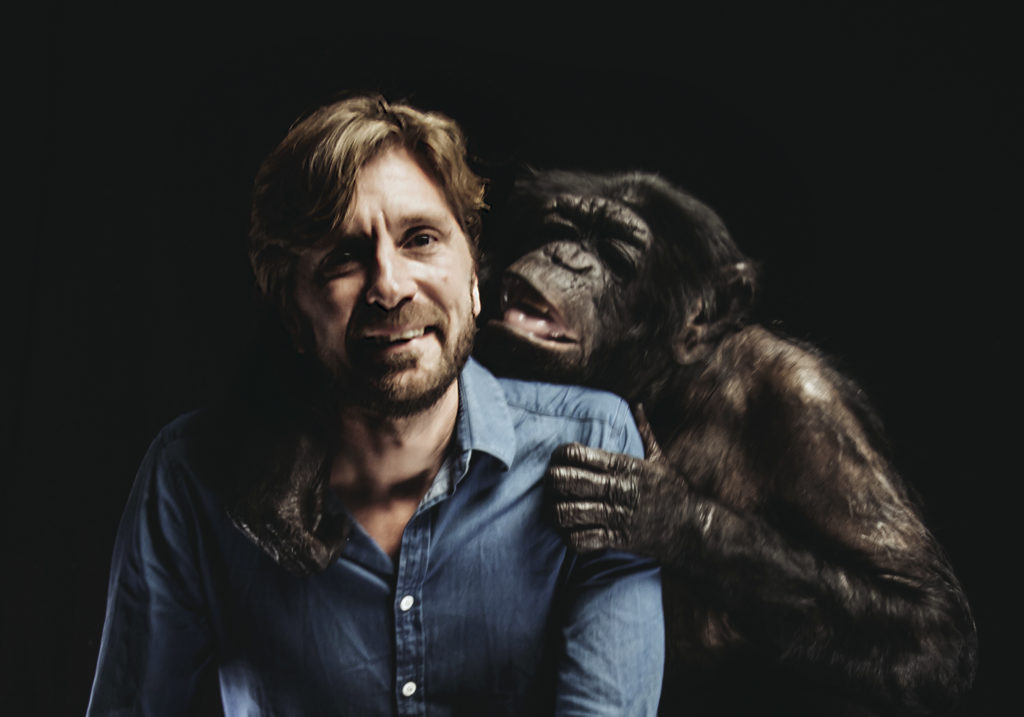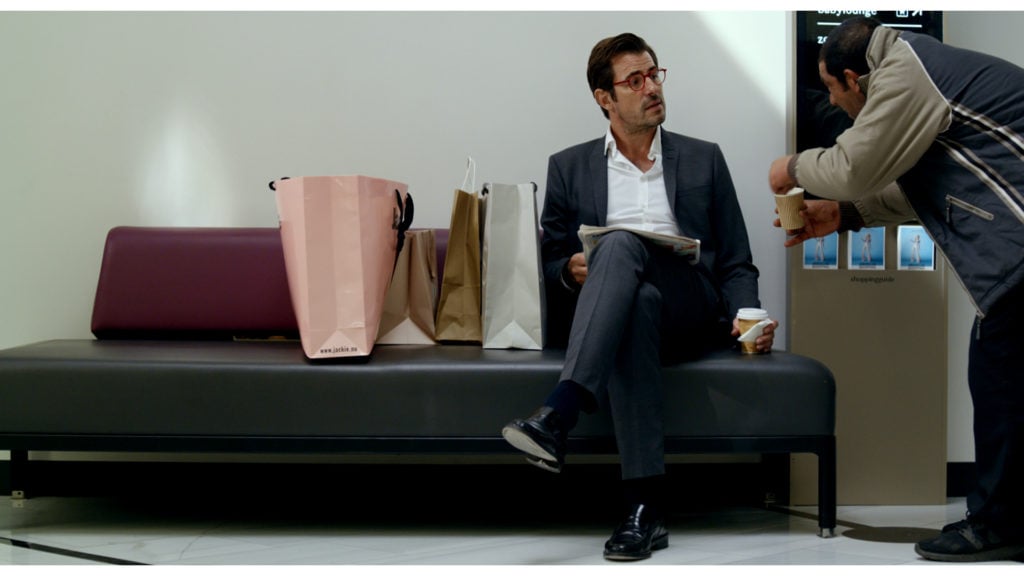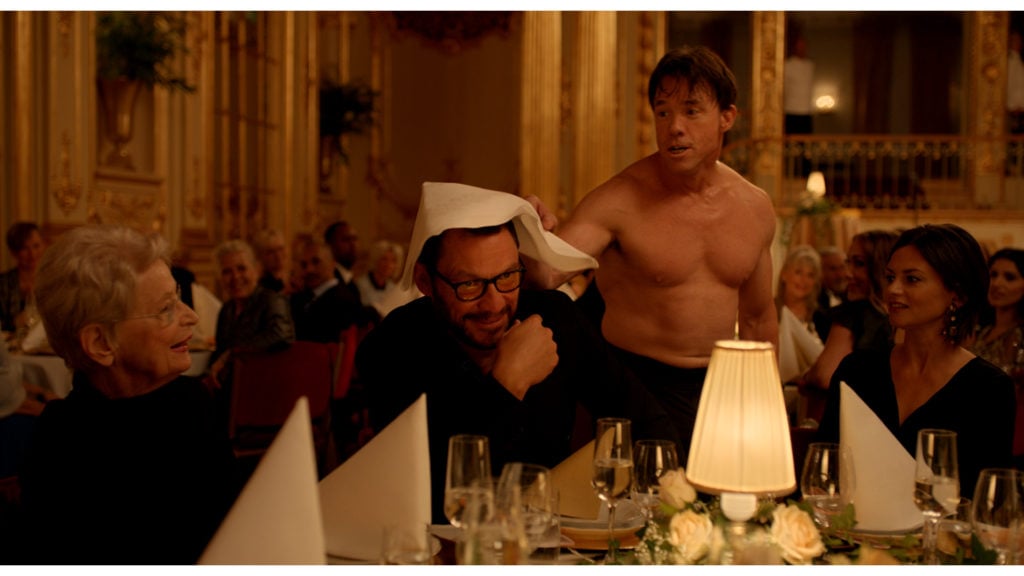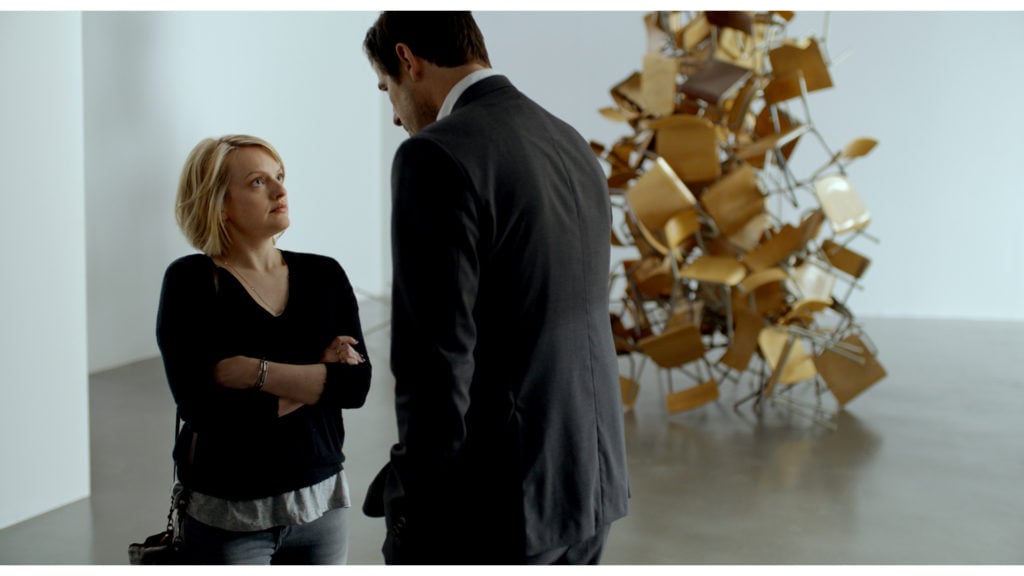Art World
‘The Art World Is Hard to Satirize’: Ruben Östlund on Sending Up Curators in His Award-Winning Film ‘The Square’
The film follows a contemporary art curator who makes a series of cringe-inducing bad decisions.

“The Square is a sanctuary of trust and caring. Within it we all share equal rights and obligations.”
So reads a plaque in front of the work of art at the center of Swedish director Ruben Östlund’s incisive feature film The Square. The film indicts capitalist culture and art-world pretension as it follows the travails of Christian, a hapless contemporary art curator played by Claes Bang. The film—Östlund’s fifth—won the top prize at this year’s Cannes Film Festival and made its US debut earlier this month.
The movie works hard to get the art world right. To prepare, Östlund and Bang interviewed prominent museum figures like Daniel Birnbaum, the director of the Moderna Museet in Stockholm. (Reading up on art publications wasn’t as useful, Östlund said, “because the language in the art world is kind of hard to get into.”)
The Square follows Christian as he makes a cascading succession of bad decisions. He installs a work of art—an illuminated square within which all people are expected to treat one another equally—but is unable to live up to the work’s standard. He goes to bed with a journalist who interviews him (played by Elizabeth Moss); accepts bad advice from his assistant on how to deal with a pickpocket; approves a disastrous PR campaign; and proposes to repair a damaged artwork on his own, in secret.
The movie’s Curb Your Enthusiasm–caliber discomforts not only earned it the Palme d’Or at Cannes, but also honors at the Toronto International Film Festival, Fantastic Fest, and the New York Film Festival.

Claes Bang encounters a beggar in The Square, a Magnolia Pictures release. Photo courtesy of Magnolia Pictures.
“The art world is a hard arena to satirize,” Östlund said. “It’s like a satire from the beginning in many ways. I only could take in things that have actually happened, like when they’ve cleaned up art pieces by accident. So it’s a naturalistic approach to the art world.”
The film’s smaller roles are also ripped from the art-world headlines. Dominic West plays an artist clad in pajamas and a suit coat (a subtle nod to the art world’s master of nightwear, Julian Schnabel) and Terry Notary has a memorable turn as a confrontational performance artist who derails a museum gala.
The gala scene—in which an artist identified only as Oleg, playing an ape, menaces museum patrons—is based on a real art-world scenario. “His name is Oleg because of the Russian performance artist, Oleg Kulik, who is a little famous in Sweden because of his performance at the Fargfabriken museum where he was playing a dog,” Östlund said. “He had a sign next to him that said ‘Beware of dog.’ Anyone who didn’t respect that, he attacked. He bit the chief curator’s daughter on the leg. They called the police!”
Other real artists and artworks provided inspiration for works that populate the museum set. One work, piles of gravel on the museum floor, plainly apes Robert Smithson. (“He was quite cool,” Östlund said approvingly.) In a piercingly awkward scene in which Moss’s character confronts Christian, the comedy is heightened by a volatile sculpture—a pile of chairs that periodically vibrates and emits loud sounds—that keeps interrupting their exchange. The work was inspired by Swedish painter Carl Hammoud, who has painted similar jumbled pileups for genuine gallery exhibitions.

Dominic West and Terry Notary in The Square, a Magnolia Pictures release. Photo courtesy of Magnolia Pictures.
The Square has its origins in a real exhibition Östlund and producer Kalle Boman organized for the Vandalorum, a design museum in Värnamo, Sweden, in 2014. The project is strikingly similar to the film’s titular artwork. It consists of a square drawn on the ground in the town center; anyone who steps inside pledges to treat everyone else inside equally.
“What I love about the art world is that the art world could embrace the idea of The Square, because it’s an arena where we can discuss what kind of society we want, where we could look at ourselves in a critical, ironical way,” Östlund said.
A refrain throughout the film is Christian’s inability to live up to the challenge of the utopian artwork he champions. But Östlund urges us not to judge him too harshly. His failures, the director says, echo society’s own shortcomings in promoting equality and justice.

Elisabeth Moss and Claes Bang in The Square, a Magnolia Pictures release. Photo courtesy of Magnolia Pictures.
Despite Östlund’s brief foray into exhibition-making and his interest in fictitious art, the director demurred when asked if he’d be interested in becoming a full-time artist. Either way, he certainly knows how to play the game.
“I realized I easily could become accepted in that group,” he said. “Maybe someone will challenge me by changing places with me. They could become a film director and I can be a contemporary artist.”
Follow artnet News on Facebook:
Want to stay ahead of the art world? Subscribe to our newsletter to get the breaking news, eye-opening interviews, and incisive critical takes that drive the conversation forward.
SHARE
Article topics

No comments:
Post a Comment